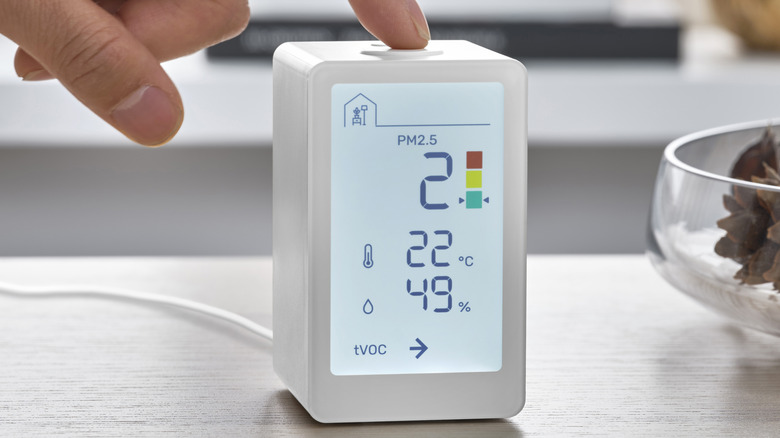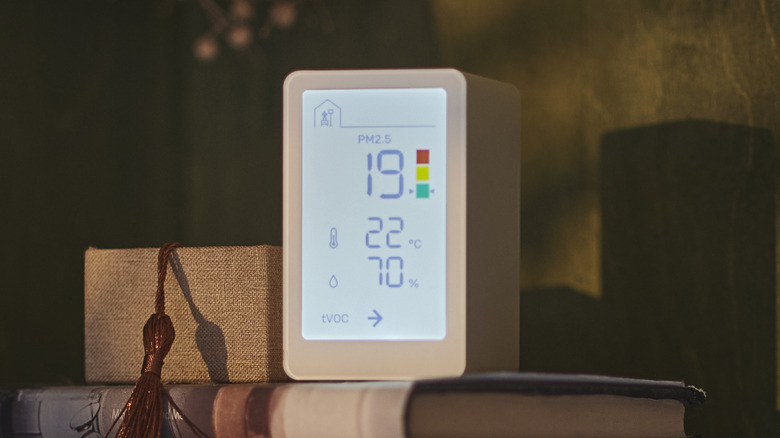IKEA's New Smart Air Quality Sensor Tracks The Home Dangers You Might Not Think Of
Swedish furniture giant IKEA is adding a new air quality sensor to its portfolio. This one looks primed to work alongside its Matter-ready DIRIGERA hub. Matter is an upcoming protocol that will supposedly allow smart devices to communicate regardless of platform. The latest IKEA offering is the VINDSTYRKA, a rather hard-to-pronounce Nordic-esque take on the term wind-striker. The VINDSTYRKA is an intelligent sensor that will let you monitor the air quality inside your house.
IKEA calls it "an affordable high-performing air quality sensor" and will start selling it in April. The company says the VINDSTYRKA's display will show a handful of air quality variables such as humidity, ambient temperature, and any gaseous pollutants lingering in the air, which is quantifiable by the technical term "total volatile organic compounds" (tVOC). In case you're wondering, IKEA is no stranger to air quality gear — for example, the STARKVIND, a table that hides an air purifier assembly underneath.
The focus is on indoor pollution
The most notable skill of the VINDSTYRKA is its ability to measure PM2.5 levels in the air. PM2.5 refers to tiny particulate matter suspended in the air less than 2.5 microns in diameter. These particles are mainly produced from the burning of fossil fuels and wood. According to the Environmental Protection Agency (EPA), fine particulate matter exposure can increase the risk of heart attacks, arrhythmia, premature death in people with heart diseases, asthma exacerbation, lung dysfunction, and other respiratory issues.
IKEA's VINDSTYRKA uses a color-coded alert system to indicate the severity of PM2.5 concentration indoors. Green stands for safe levels, while the red zone signifies that you might need to turn on your air purifier. Per the EPA's revised Air Quality Standards for Pollution and Air Quality index from 2012, a PM2.5 concentration of up to 12 micrograms per cubic meter is considered safe, up to 35.4 micrograms per cubic meter is moderate, while anything above the 24-hour average of 55.5 micrograms per cubic meter is considered unhealthy.

